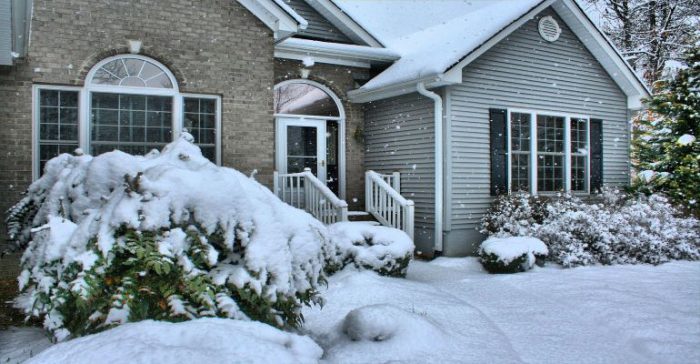This article was originally published on pnnl.gov on Oct. 31, 2019.
Researchers at Pacific Northwest National Laboratory (PNNL) are leading an effort that ultimately could result in residential homes that are tighter and better insulated, blocking cold air and moisture that cause higher energy bills and reduce homeowner comfort.
PNNL is joined in the three-year project by researchers from Oak Ridge National Laboratory (ORNL) and the University of Minnesota. Funding is provided by the U.S. Department of Energy (DOE) Office of Energy Efficiency and Renewable Energy’s Building Technologies Office.
Specifically, the project is focused on identifying cost-effective wall assemblies—or retrofits—that can be applied over existing exterior walls of residences, particularly in cold climates.
“Residential buildings consume about 20 percent of the nation’s energy. Studies have shown that tens of millions of older homes nationwide have little or no wall insulation, and many homes also experience air leakage,” explains PNNL’s Chrissi Antonopoulos, part of the project team. “It will be difficult to resolve the energy and comfort losses from these homes without identifying high-performance enclosures that are cost effective and easy to install.”
Team’s Report and Expert Meeting Inform Future Steps
A key milestone in the project recently was achieved with the research team’s publication of the report, Wall Upgrades for Deep Energy Retrofits: A Literature Review. The project team also held a meeting attended by 33 international thermal enclosure experts last spring in Washington, D.C. Both activities helped influence the selection of wall assemblies for an upcoming physical experiment.
Antonopoulos notes that there are as many ways to retrofit a wall as there are to build one, a fact borne out in the team’s report. The document examined pertinent national and international wall-related research efforts, presented information on many different types of wall retrofits, and explored innovative insulation materials.
The report and results from the expert meeting help set the stage for the project’s next steps, which include thermal and moisture modeling and experimental testing of eight retrofit wall assemblies at the University of Minnesota.
“The experiment will evaluate and verify the thermal and moisture performance of the selected wall assemblies, and determine the applications that provide cost-effective energy, comfort, and other benefits to homeowners,” Antonopoulos says. Results from the modeling and the experiment will inform development of a techno-economic analysis to help guide future DOE efforts to advance thermal enclosure retrofits.
The project is expected to be completed in 2021.
Antonopoulos notes that while wall retrofits singularly can deliver improvements in energy efficiency and comfort, they often are only a partial solution. The retrofits need to be considered within the broader context of a “deep energy” retrofit that examines, and perhaps replaces, other energy-related components in a home, such as heating and ventilation systems, doors, and windows.
Funding: DOE Office of Energy Efficiency and Renewable Energy’s Building Technologies Office.
